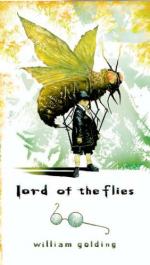|
This section contains 1,601 words (approx. 6 pages at 300 words per page) |

|
Psychological Behavior in "Lord of the Flies"
Summary: In "Lord of the Flies," William Golding uses allegory to illustrate the human psyche. Different characters are created to represent the parts of an individual's mental structure or personality: the animalistic urges of the Id, the supervisory efforts of the Ego, and the high-minded impulses of the Superego.
In Lord of the Flies, William Golding uses allegory to illustrate the system of the human psyche. Different characters are created to represent different parts of an individual's mental structure or personality: the animalistic urges of the Id, the supervisory efforts of the Ego, and the high-minded impulses of the Superego. E.L. Epstein suggests, "The tenets of civilization, the moral and social codes, the Ego, the intelligence itself, form only a veneer over [the Id's] white-hot power" (205). The primitive desires of the Id are the leading feature of one's individuality.
The characters that symbolize the animalistic urges of the Id are created in order to demonstrate the primitive unconscious part of the human mind. There is a portion of Id in each character, but Jack, Roger, and Ralph are the most excellent examples. Jack is a red-haired, ugly teenager. He is a leader of the choir, but...
|
This section contains 1,601 words (approx. 6 pages at 300 words per page) |

|


